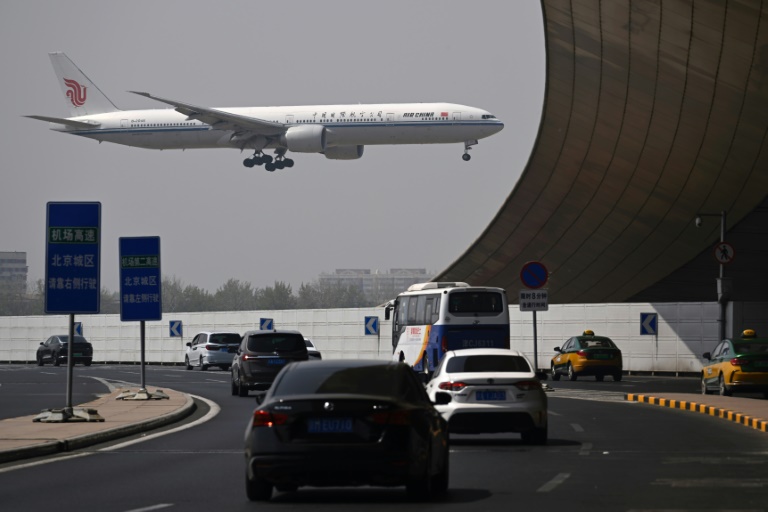STEPHEN Miran's A User's Guide to Restructuring the Global Trading System reads less like a traditional economic white paper and more like a manifesto for a new age of economic nationalism - one that unapologetically links dollars, deterrence and diplomacy.With Donald Trump's return to the White House, this document serves as the intellectual blueprint for reimagining the US' role in the global economy - not as a benevolent hegemon, but as a hard-nosed landlord demanding overdue rent for the American-made foundations that underpin global trade and security.At the heart of Miran's thesis is a reinterpretation of the classic Triffin dilemma: America's role as issuer of the world's reserve currency forces it to run persistent trade and fiscal deficits.
This is not a design flaw, but a systemic feature - for the US dollar to function as the world's reserve currency, it must be in global circulation, and that means the US must import more than it exports and supply safe, dollar-denominated assets to the rest of the world.That very act of supplying global liquidity - by running deficits - is what undermines domestic manufacturing, drives currency overvaluation, and contributes to the hollowing out of the American working class.Miran and the Trump economic team don't seek to overturn this system entirely - they understand that the dollar's dominance gives the U.

S. unmatched financial leverage. But they want to rebalance the costs.
Their solution is nuanced but radical: devalue the dollar in a managed, strategic way to revive American industry, even while keeping the dollar as the global reserve currency.It's a bold attempt to square the Triffin circle - to remain the banker of the world and bring supply chains back home, to fund global military commitments and reshore jobs.This is the paradox Trump's team wants to own and manipulate: allow the world to keep using the dollar, but make that privilege come with reciprocal economic and security obligations.
In other words, the US wants to have its cake and eat it too. It wants the perks of empire without the burdens, to be the world's indispensable currency provider and its toughest industrial competitor.And how do you make such a contradiction stick? According to Miran's playbook, you manufacture a controlled disruption - a shock phase.
You create chaos, trigger market recalibrations, and force both allies and rivals to renegotiate the rules under duress. Tariffs soar, currencies jolt financial markets, and supply chains lurch into chaos - but in the eye of that storm, the US positions itself as both the disruptor and the indispensable anchor, betting that its consumer base is too massive, its military umbrella too vital, and its dollar assets too entrenched for the world to walk away.It's a long shot, but it just might work.
It's the geopolitical equivalent of shaking the table and betting that no one can afford to leave the game.If allies like Europe and Japan, or ambivalent partners like India or Saudi Arabia, find themselves caught between China's rise and America's controlled disruption, the bet is they'll hedge back toward Washington, even if reluctantly.Miran's approach is less about consensus and more about recalibration through leverage - economic, financial, and strategic.
Miran dusts off the once-taboo policy tools of tariffs and currency interventions and rebrands them as modern instruments of statecraft.He argues that tariffs can raise revenue and shift trade flows without triggering inflation, provided they're paired with currency depreciation. The 2018-2020 trade war with China, he suggests, is proof of concept.
Inflation stayed tame, GDP held firm, and China, he claims, bore the brunt of the costs. It's a seductive argument, especially for a political base that feels globalisation gutted their towns and gave Beijing a free pass.But here's where the friction begins.
Mainstream economists - those who still believe in comparative advantage, rule-based trade and multilateralism - would tell you that Miran's approach is a high-wire act over a globalised economy that's already on edge.Unilateral tariffs risk retaliation, fragmented supply chains, and a reversion to beggar-thy-neighbor policies. And the idea that you can seamlessly engineer currency devaluation to offset tariff-induced price hikes assumes an almost mechanical pass-through that empirical studies often refute.
In a tightly hedged, dollar-invoiced global economy, exchange rate shifts don't translate cleanly to retail prices. Miran waves away these nuances, perhaps too breezily.Moreover, Miran's strategic framing - tying tariff schedules to NATO contributions, UN voting records, and even foreign leaders' rhetorical tone toward America - marks a sharp departure from the liberal trade order birthed in Bretton Woods.
That system was about locking in rules, reducing volatility, and spreading prosperity.Miran proposes something closer to a tariff-and-security loyalty program. Allies who don't pay their dues? They get bumped into a higher tariff bracket.
Countries that let China evade sanctions?Prepare to pay at the border. It's a transactional approach reminiscent of Trump's diplomacy - cut the poetry, show me the invoice.Historically, Bretton Woods was anchored by gold and American idealism.
Miran's model feels more like Bretton Woods 3.0 - but weaponised.The reserve currency remains the dollar, but now it's leveraged for maximum geopolitical return.
The WTO and IMF are footnotes. Multilateralism becomes conditional, not foundational. Trade policy is no longer about efficiency - it's a tool to punish rivals, reward allies and repatriate manufacturing.
The shift is stark.What's clear is that Miran doesn't see the global system as broken so much as misaligned - too much risk and cost borne by the US, too much free-riding abroad.His proposal aims to recalibrate, not dismantle.
But it's a recalibration with teeth. If executed carefully, it could pressure adversaries, bring key supply chains home, and bolster American industry.If bungled, it could accelerate de-dollarisation, trigger trade wars, and introduce new instability to a global system still wobbling from Covid-19, conflict, and climate shocks.
This isn't just a user's guide to restructuring trade - it's a user's guide to how a post-liberal superpower reasserts its dominance in an increasingly multipolar world.It's as if Miran is telling us: globalization as we knew it is over, and in the new game, access to America comes with conditions. Chaos, after all, can be a ladder - and the US intends to climb it first.
Buckle up.*The writer is an adjunct lecturer at Universiti Teknologi Petronas, international relations analyst and a senior consultant with Global Asia Consulting. The views in this OpEd piece are entirely his own.
© New Straits Times Press (M) Bhd.
Top

Dollar, Disruption and Dominance: How Trump's team plans to rewrite the rules of global trade

STEPHEN Miran’s A User’s Guide to Restructuring the Global Trading System reads less like a traditional economic white paper and more like a manifesto for a new age of economic nationalism - one that unapologetically links dollars, deterrence and diplomacy.











